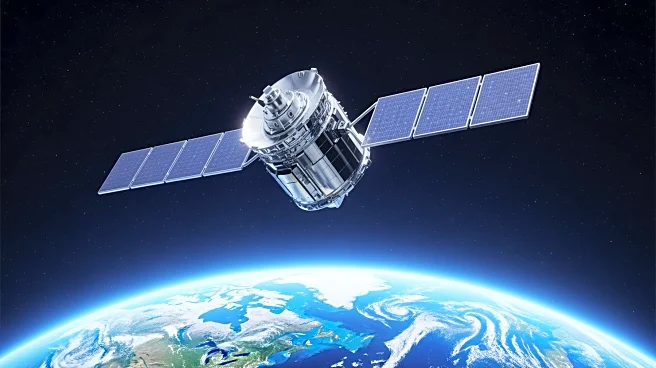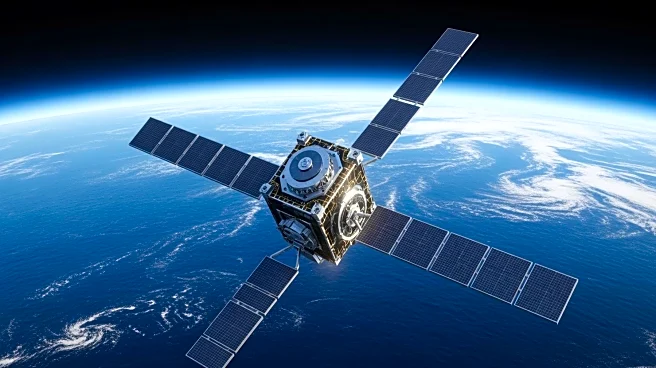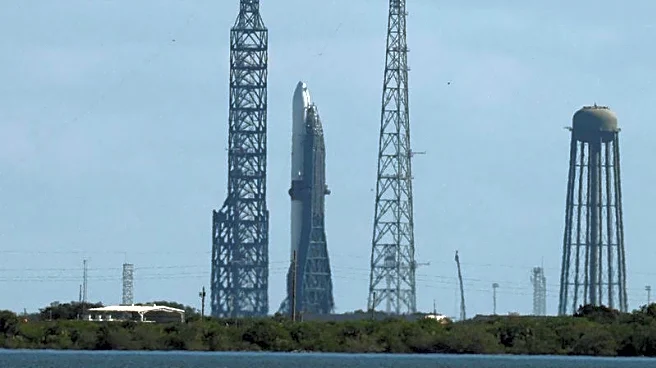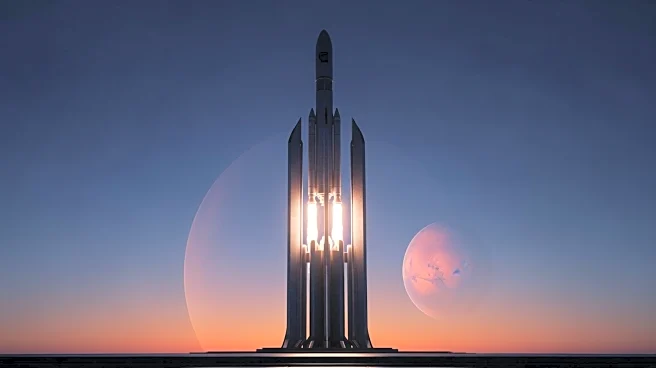What's Happening?
NASA is set to launch the Sentinel-6B satellite, part of an international mission to monitor global sea levels and ocean conditions. The launch is scheduled for November 17, 2025, aboard a SpaceX Falcon
9 rocket from Vandenberg Space Force Base in California. Sentinel-6B will continue a decades-long effort to collect precise sea level data, extending the dataset to nearly four decades. The mission aims to protect coastal infrastructure, improve weather forecasting, and support commercial activities at sea. NASA will provide live coverage of the launch and prelaunch activities through various platforms, including NASA+, Amazon Prime, and social media.
Why It's Important?
The Sentinel-6B mission is crucial for understanding and addressing the impacts of climate change on global sea levels. Accurate sea level data is essential for predicting coastal flooding, managing water resources, and planning infrastructure development. The mission also supports international collaboration in Earth observation, involving agencies like ESA, NOAA, and EUMETSAT. By providing critical data, Sentinel-6B contributes to global efforts to mitigate climate change and adapt to its effects, benefiting governments, businesses, and communities worldwide.
What's Next?
Following the launch, Sentinel-6B will begin its mission to collect and transmit sea level data, which will be used by scientists and policymakers to inform climate action strategies. The satellite's data will enhance weather forecasting models and improve the accuracy of climate predictions. As part of the Copernicus program, Sentinel-6B will also support international research initiatives and foster collaboration among space agencies. The successful deployment of Sentinel-6B will pave the way for future missions aimed at monitoring Earth's changing environment.
Beyond the Headlines
The Sentinel-6B mission highlights the importance of international cooperation in addressing global challenges like climate change. By pooling resources and expertise, space agencies can achieve more comprehensive and accurate Earth observations. The mission also underscores the role of technology in advancing scientific understanding and informing policy decisions. As climate change continues to impact societies worldwide, missions like Sentinel-6B are vital for developing effective adaptation and mitigation strategies.












